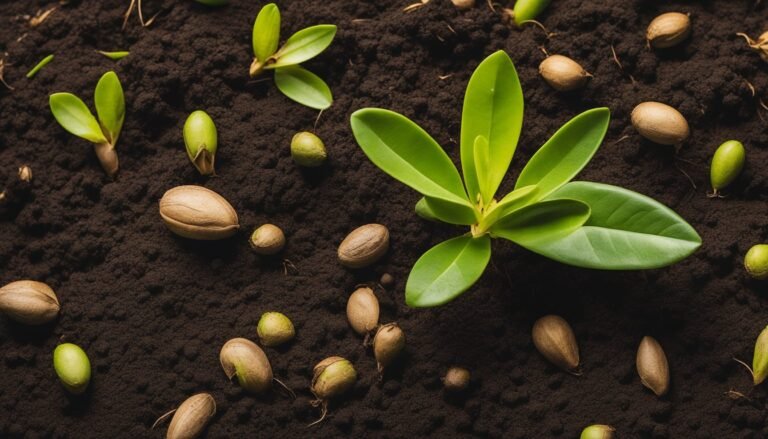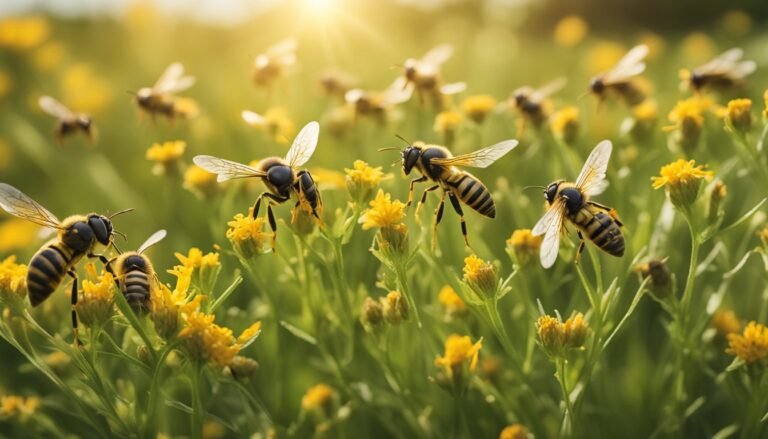Top dressing a lawn is an essential maintenance process which involves applying a thin layer of soil or compost over the grass. This practice helps improve soil fertility, enhances the lawn’s appearance, and aids in the repair of minor imperfections such as uneven surfaces. It’s a method commonly used by gardening professionals and enthusiasts alike to keep lawns lush, green, and healthy. The type of material used for top dressing varies depending on the specific needs of the lawn, like soil structure and nutrient requirements.

British lawns can benefit greatly from top dressing, particularly when it’s part of an integrated lawn care routine that includes aeration, over-seeding and using a good robot mower frequently. This process encourages deeper root growth, thus helping your grass to become more drought-resistant and vigorous. Top dressing can also aid in thatch management and improve the overall soil structure over time, leading to a denser and more robust turf. It’s important to apply only a small amount of dressing to avoid smothering the grass and to do it at the right time of year for optimal results.
Key Takeaways
- A thin layer of top dressing can enhance lawn health and aesthetics.
- Integrating top dressing with other lawn care practices offers additional benefits.
- Correct application and timing are crucial for effective top dressing.
Understanding Lawn Top Dressing
In my discussion of lawn top dressing, I’ll highlight the key advantages of the practice and the optimal conditions under which to carry it out. It’s important to understand that this process involves the application of a thin layer of material over the lawn, which can significantly improve the health and appearance of the grass.
Benefits of Top Dressing
My lawn care routine includes top dressing for several reasons. Primarily, top dressing enhances soil structure by introducing new soil and organic matter. This addition can improve drainage and encourage deeper, healthier grass root growth. The process promotes a lush, green carpet of lawn by evening out any bumps and depressions and breaking down thatch.
A particularly beneficial aspect of top dressing is its effect on soil fertility. Adding a mix rich in nutrients helps in sustaining vibrant grass. Moreover, by applying top dressing, I can help to establish newly seeded areas or overseeeded patches to blend seamlessly with the existing lawn.
Ideal Conditions for Top Dressing
From my experience, the ideal conditions for top dressing involve the timing of the application – typically during the growing seasons of spring or autumn. These seasons offer moderate temperatures and consistent moisture levels, ensuring the dressing melds with the soil effectively.
The soil should be moist but not saturated, and I find that aerating the lawn prior to top dressing can enhance the benefits. Aerating allows the material to infiltrate deeper into the soil, thus leading to greater improvements in soil structure and health.
Applying top dressing when the grass is actively growing allows quick recovery and utilisation of the added nutrients. Therefore, by choosing the right conditions and timing, my lawn reaps the maximum benefits from top dressing.
Preparing for Top Dressing
As I gear up for top dressing my lawn, it’s critical to ensure the grass is ready to receive the treatment. A thorough preparation sets the stage for optimum benefits from top dressing.
Assessing Lawn Health
Before I begin, I always conduct a soil test to understand the nutrient and pH levels of my lawn. This test informs me about any deficiencies that need addressing. If my lawn’s performance has been underwhelming, I might suspect soil compaction, which can be alleviated through aeration. This process allows air, water, and nutrients to penetrate built-up grass or lawn thatch, which can be removed by dethatching if necessary. I ensure that any such issues are resolved before adding top dressing materials.
Choosing the Right Materials
Selecting the proper top dressing materials is crucial. For my lawn, which has clay soil, a mixture including sharp sand can improve drainage, reducing water-logging which is often a problem with heavy clay. On the other hand, if the soil structure is good, purely organic elements like compost will suffice, enhancing the soil biology without altering the texture drastically.
For lawns with poor soil structure, I might choose a mix with both organic material and sand. My preference leans towards well-rotted organic compost as it’s nutrient-rich and helps in developing a robust turf. Peat can be helpful for retaining moisture, but I use it sparingly due to its acidic nature and the environmental concerns associated with its extraction. It’s essential to match the topdressing material to the current soil composition for an effective top dressing process.
By paying attention to these details, I make sure my lawn is prepped and ready for top dressing, setting the stage for a healthier, lusher garden.
The Top Dressing Process

In my experience, the key to a lush and healthy lawn lies in the precision of the top dressing process, from the careful application to diligent aftercare. I’ll guide you through the steps I take, focusing on technique and subsequent lawn maintenance.
Application Techniques
Firstly, I select a lawn top dressing mix suitable for my soil type, which typically comprises a blend of sand, loam, and organic matter. To begin the application, I use a shovel to spread the dressing in small piles across the lawn. Then, with a back-and-forth motion using a rake, I evenly distribute the top dressing over the grass, ensuring no area is left uncovered. If I’m dealing with a larger lawn, a wheelbarrow is essential to transport the dressing across the area efficiently.
- Key Tools:
- Shovel
- Rake
- Wheelbarrow
Once the dressing is applied, I often follow with seeding if bald patches are present. I evenly scatter grass seed pre-mixed with fertiliser, carefully choosing a seed type that matches the existing lawn. Precision is critical here, as I aim to ensure optimal germination and integration with the existing turf.
- Seeding Steps:
- Mix grass seed with fertiliser
- Evenly scatter over the lawn
- Gently rake to integrate seeds with dressing
Aftercare and Maintenance
After dressing and seeding my lawn, the focus shifts to maintaining the ideal conditions for grass growth and soil microbes activation. Watering is my first priority, as consistent moisture levels are essential for seed germination without washing away the top dressing. I water lightly and frequently, allowing the soil to absorb moisture without becoming waterlogged.
To encourage strong roots and prevent compaction, I abstain from mowing for at least a few weeks following top dressing. This gives the new shoots time to establish themselves without disturbance. I also monitor the lawn’s response to the top dressing, as this can indicate whether additional fertilising might be necessary to provide nutrients to both the existing and newly seeded grass.
- Maintenance Checklist:
- Regular watering without oversaturation
- Delay mowing to allow grass establishment
- Evaluate the need for additional fertiliser
Through this methodical approach, I’ve found that my lawn remains in peak condition, benefiting from the nutritional boost and improved soil structure afforded by top dressing.
Troubleshooting Common Issues

When it comes to maintaining a pristine lawn, I must be vigilant in addressing common issues that can mar its appearance and health. My expertise lies in recognising and rectifying problems such as pervasive weeds, thatch accumulation, and uneven terrain.
Managing Weeds and Thatch
Weeds can be a persistent nuisance, but I ensure a healthy, dense lawn that naturally suppresses unwanted plants. However, should weeds appear, I manually remove them or apply a targeted herbicide. It’s important to note that excessive thatch—a layer of grass clippings and organic matter—can harbour weed seeds, creating a need for intervention. Regular aeration and the appropriate top-dressing materials help to break down thatch, improve soil structure, and enhance water retention and drainage.
Addressing Uneven Terrain
An uneven lawn can result from a variety of factors, including hollows or bumpy lawn surfaces due to poor soil and compaction. To correct these depressions, I apply a methodical levelling process involving top-dressing with a mix appropriate to the existing soil texture. This promotes a level lawn surface and improves drainage issues without compromising the soil’s ability to retain water. By carefully spreading the dressing and smoothing out the surface, I efficiently mitigate terrain irregularities.
Frequently Asked Questions

In my experience, these are the key questions many gardeners have about top dressing a lawn, answered with specificity and clarity.
When is the ideal time to apply top dressing to a garden lawn?
I find the best time to top dress a lawn is during the growing season, typically in early spring or autumn. This allows the grass to recover from any disturbance and benefit from the top dressing as it grows.
Which materials are recommended for creating an effective top dressing for lawns?
An effective top dressing for lawns usually consists of a balanced mix of sand, loam, and peat or compost. I recommend looking for a sterilised and weed-free mixture specifically designed for top dressing.
How does one determine the proper ratio of materials for a lawn top dressing mix?
The proper ratio depends on your lawn’s soil condition and the desired results. I often use a general-purpose top dressing with a ratio of 3 parts sand to 6 parts loam and 1 part peat or compost, popular among gardeners for maintaining a good lawn texture.
What are the benefits of top dressing a lawn, and how often should it be done?
Top dressing can improve soil structure, encourage deeper root growth, and enhance the lawn’s drought resistance. I normally recommend top dressing annually for maintenance, or more frequently if the lawn is subject to intense use or poor soil conditions.
Is it more beneficial to overseed a lawn before or after the top dressing process?
In my practice, overseeding a lawn before applying top dressing is more beneficial as the top dressing can then help to work the seeds into the soil, providing better seed-to-soil contact for germination.
Can standard topsoil be used for top dressing, or is a specific blend required?
Standard topsoil is generally too dense and may contain weed seeds or pathogens. I always suggest using a specific top dressing blend, which is formulated to be fine-textured and free-draining to improve your lawn’s health without introducing new problems.




